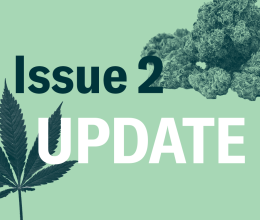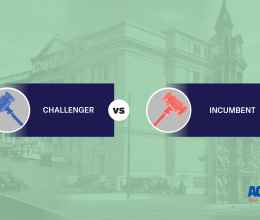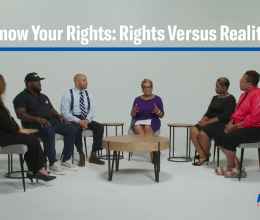So what is the consent decree anyway?
In 2013-2014, the U.S. Department of Justice (DOJ) investigated the Cleveland Division of Police (CDP) and found that many of the police department’s practices were illegal and unconstitutional. For example, Cleveland police were regularly using too much force on residents, and weren’t properly looking into residents’ complaints of misbehavior. There were many other problems too that the DOJ discusses in its 58-page report.
The DOJ then took the city of Cleveland (which includes the police department) to court over their unconstitutional practices, and with the help of a judge, the two parties worked out a settlement agreement, or consent decree. The city of Cleveland agreed to make many changes to its police department – and it had no other choice, considering how bad the problems were that the DOJ found. The consent decree is a 110-page document that outlines all the changes Cleveland must make to its police department, overseen by a federal judge to ensure that the city complies with it.
That was in May of 2015. Now the city is in the process of trying to make all those changes, which is no small task. The judge is still involved to make sure those changes happen and he is getting some help from the Monitoring Team. The Monitoring Team is made of up 19 national and community experts, and they act as the eyes and ears of the judge. They travel around the city, working with the police department and various other groups (like the Community Police Commission, explained below) to make sure that the changes being made comply with the requirements of the consent decree.
The Community Police Commission (CPC) is another group you’ll hear about. They serve as the voice of the people, and work to make sure that Cleveland residents’ concerns are heard during the reform process. Their monthly meetings are open to the public and are held in different neighborhoods of Cleveland. To see when their next meeting will be held, visit our News and Updates section or the CPC’s website.
We, the ACLU of Ohio, are also here to make sure that the Cleveland police department is making the reforms it needs to, and that the public is involved in those decisions. Start getting informed and involved today
How did we get here? A timeline.
2002-2004 reform efforts
The 2015 consent decree can be traced to an earlier Department of Justice (DOJ) investigation of the Cleveland Division of Police (CDP). In 2002, the DOJ investigated the CDP for issues related to conditions of confinement, excessive force, and racial profiling. The DOJ entered into a voluntary agreement with the CDP and terminated that agreement in 2004 following a series of policy reforms. But as noted by the DOJ, “many of the policy and practice reforms that were initiated in response to our 2004 agreement were either not fully implemented or, if implemented, were not maintained over time.”
2012 shootings
In 2012, 10 years after the initial Department of Justice (DOJ) investigation, members of the Cleveland police shot two unarmed African American residents, Timothy Russell and Malissa Williams, 137 times in their car, resulting in their deaths. In response to this culmination of decades of broken police-community relations, the ACLU of Ohio sent a letter to the DOJ requesting an investigation into the Cleveland Division of Police.
In March 2013 the DOJ launched its investigation.
The DOJ released its findings on December 4, 2014.
The DOJ found that the Cleveland Division of Police engages in:
- The unnecessary and excessive use of deadly force, including shootings and head strikes with impact weapons;
- The unnecessary, excessive or retaliatory use of less lethal force including Tasers, chemical spray and fists;
- Excessive force against persons who are mentally ill or in crisis, including in cases where the officers were called exclusively for a welfare check; and
- The employment of poor and dangerous tactics that place officers in situations where avoidable force becomes inevitable.
The DOJ also found that the Cleveland Division of Police fails to:
- Adequately review and investigate officers’ uses of force;
- Fully and objectively investigate all allegations of misconduct;
- Identify and respond to patterns of at-risk behavior;
- Provide its officers with the support, training, supervision, and equipment needed to allow them to do their jobs safely and effectively;
- Adopt and enforce appropriate policies; and
- Implement effective community policing strategies.
Creation of the consent decree
In December 2014 the city of Cleveland agreed to enter into a consent decree, with oversight from a federal judge and Monitor. During the negotiations phase between the city and the Department of Justice (DOJ), the ACLU of Ohio provided recommendations for reform. Once the city and DOJ reached an agreement on May 26, 2015, the consent decree was released and included three key provisions that aim to:
- Strengthen training, community engagement, search seizure protections, crisis intervention practices, transparency, oversight, and officer support
- Implement bias-free policing.
- Offer guidelines and limitations on use of force.
On June 12, 2015, Chief U.S. District Judge Solomon Oliver Jr. approved and signed the consent decree. Once Judge Oliver entered the decree, the city of Cleveland and the Department of Justice began work to implement the agreed-upon reforms.
Progress to date
The ACLU of Ohio has taken an active role in ensuring that the implementation of the consent decree complies with national best practices, as well as with the agreement itself, and the goal of achieving constitutional policing in Cleveland. We have been in close contact with the Cleveland Police Commission (CPC), the Monitoring Team, and members of city Council, and have attended meetings held by these groups. We have provided our input via the following:
- A January 15, 2016 letter to the CPC, city Council, and the Monitoring Team concerning the CPC’s recommendations on bias-free policing and the Police Review Board
- A January 26, 2016 letter to the Monitoring Team discussing recommendations for the “Monitoring Plan,” a set of guidelines and milestones for the first year of the consent decree, in which we strongly encouraged some progress towards reforming the search and seizure training and improving the officer discipline policy
- An April 4, 2016 letter and meeting with the Monitor to provide advice solicited by the Monitoring Team on body camera policy. The issues discussed included: which situations should require activation/deactivation of the cameras, officer access to recordings, who should be required to wear the cameras, and the retention and public records policies related to the footage.
- An August 8, 2016 press release discussing concerns that proposed changes to the Police Review Board did not properly provide for needed oversight
- A September 29, 2016 press release, an October 4, 2016 meeting with the Monitor, and an October 5, 2016 letter to the Monitor and CPC discussing recommendations in response to the proposed draft of the use of force policy
- An October 19, 2016 letter to the Monitor and CPC discussing recommendations in response to the proposed draft of the use of force reporting policy
- An October 26, 2016 letter to the Monitor and CPC discussing recommendations for a new investigations policy
- An April 10, 2017 letter to the Community Police Commission discussing recommendations in response to the proposed draft of CDP’s discipline policy
- A September 29, 2017 letter to the Community Police Commission and Monitor regarding CDP’s bias-free policing policy; and
- An October 20, 2017 letter to Cleveland Mayor and Police Chief regarding CDP’s bias-free policing policy.
- A November 15, 2018 letter to the Monitor and Chief of Police urging revisions to CDP's search and seizure policies.
- An August 7, 2019 letter making recommendations for CDP's upcoming policy on interacting with transgender individuals.
- A January 10, 2020 letter to the Cleveland Chief of Police regarding body-worn cameras during secondary employment.
- Read our March 18, 2021 letter, sent with Trans Ohio and Equality Ohio, urging revisions to CDP's policy governing police interactions with transgender and gender nonconforming individuals.
On April 3, 2017, U.S. Attorney General Jeff Sessions ordered the Department of Justice to review all existing consent decrees with police departments, raising speculation that the DOJ could withdraw from these much-needed reforms. However, the Cleveland consent decree is overseen by a federal judge, who maintains control until its requirements have been fulfilled, and would need to approve any changes. Barring further developments, we will continue to track Cleveland’s consent decree and provide input as we have been.
The consent decree requires reform to take place across many areas simultaneously. We encourage you to read our January 2, 2019 report for a more detailed explanation of changes happening to civilian oversight, equipment and resources, bias-free policing, discipline, and body cameras.
The ACLU of Ohio has always been engaged in the fight for police reform in Cleveland and throughout Ohio, and we will continue to play an instrumental role in monitoring implementation and promoting the mission of constitutional policing.









